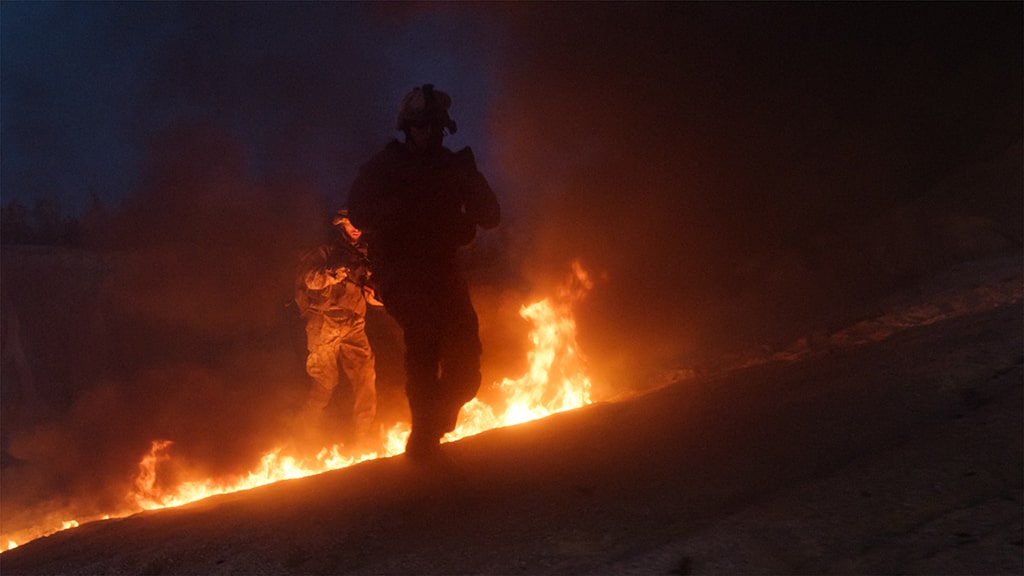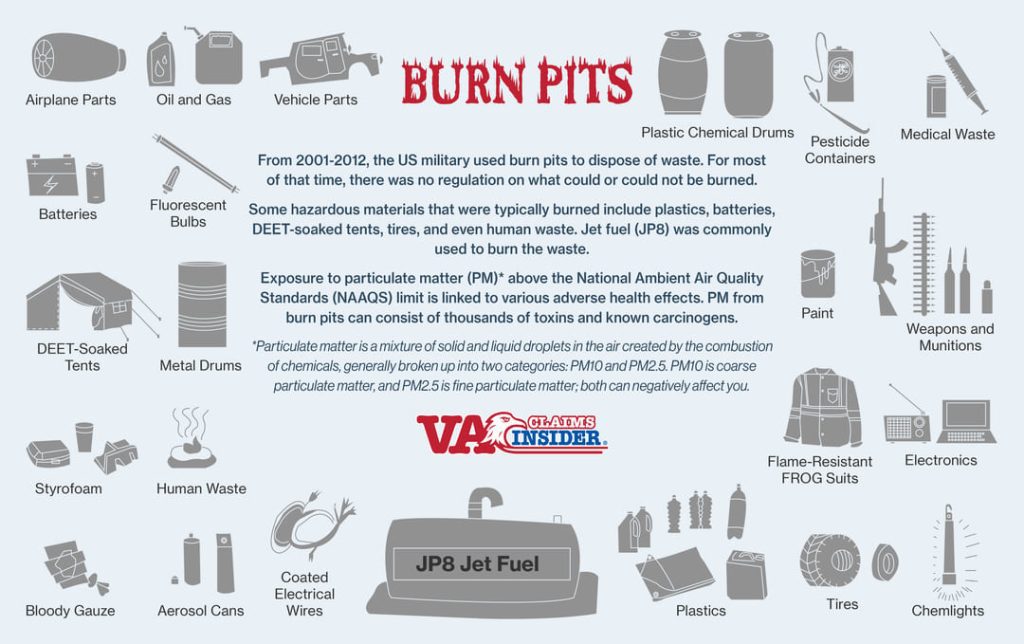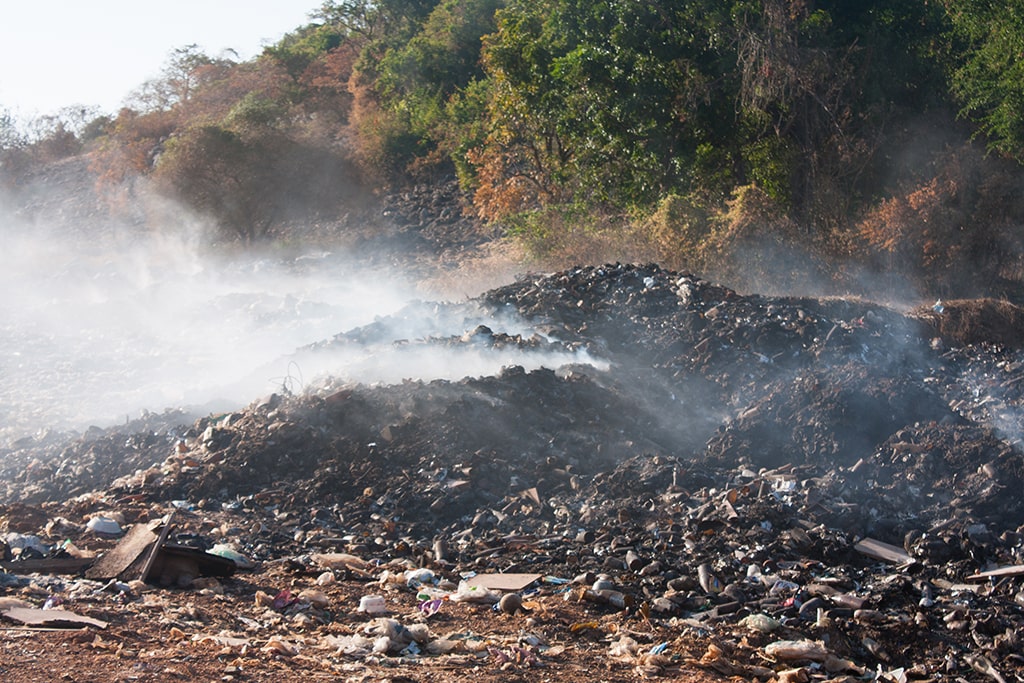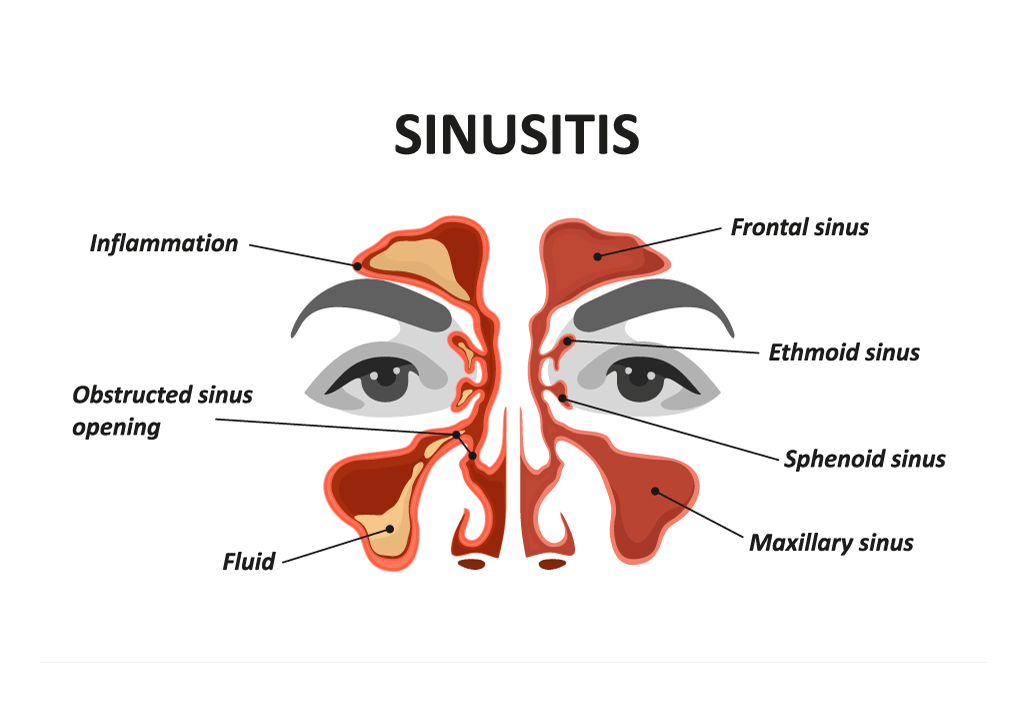Looking for Expert-Level VA Claim Answers?📱Call Us Now! 737-295-2226
New VA Rule Grants Presumptive Service Connection for Asthma, Sinusitis, Rhinitis, and Rhinosinusitis Claims for Eligible Veterans
As of August 2, 2021, the VA presumes that particulate matter exposures during military service in several regions are likely to have caused or aggravated certain respiratory conditions. This new rule opens doors for many veterans who have been unable to service-connect these respiratory conditions until now. Find out how this new rule might affect YOUR claim and VA rating!
The Department of Veterans Affairs has just opened a door for veterans with sinusitis, rhinitis, asthma, or rhinosinusitis to obtain service connections and be eligible for a burn pit VA disability rating. Thanks to this brand-new rule, it should be much easier to obtain a VA disability rating for burn pit exposure through presumptive service connection if you served in a particular theater during specified time periods.
Table of Contents

On August 2, 2021, the VA began processing claims for asthma, rhinitis, sinusitis, or rhinosinusitis on a presumptive basis when the veteran is eligible based on location, date of chronic diagnosis, and time of service. This ruling was announced by the VA on August 3, 2021.
If you served in Afghanistan, Southwest Asia, or certain other regions and developed sinusitis, rhinitis, rhinosinusitis, or asthma within 10 years from your separation from active duty service, these respiratory conditions will now be presumed service-connected. (This is especially big news for Afghanistan veterans, who had no presumptives available to them before this ruling.)
The PACT Act bill has expanded and extended VA health care eligibility for veterans with toxic exposures during the Vietnam, Gulf War, and post-9/11 eras.
More than 20 NEW presumptive conditions for burn pits (and other toxic exposure) have been added to the growing list of presumptives.
You DESERVE a HIGHER VA rating.
Take advantage of a VA Claim Discovery Call with an experienced Team Member. Learn what you’ve been missing so you can FINALLY get the disability rating and compensation you’ve earned for your service.
List of Burn Pit Exposure Presumptive Conditions
Effective August 5, 2021, 38 CFR 3.320 establishes presumptive service connection (SC) for the following chronic respiratory conditions related to burn pit exposure:
- Asthma
- Rhinitis, and
- Sinusitis (or Rhinosinusitis, which is inflammation of the nasal cavity and paranasal sinuses).
According to VA Disability Expert Brian Reese, “Asthma is a high-value claim and can be rated at 10%, 30%, 60%, or 100% depending upon the frequency, severity, and duration of symptoms.”

Rhinitis and sinusitis are diseases of the nose and sinuses, which can also cause or aggravate obstructive sleep apnea.
Thus, a veteran can file a VA claim for sleep apnea secondary to rhinitis or sinusitis. (Here’s a great article about Sleep Apnea secondary conditions.)
WATCH: Burn Pit Exposure Presumptive Conditions Revealed & Explained
***Video Timestamps & Resources***
⏩ 00:12 Burn Pit Exposure Presumptive Conditions Introduction
⏩ 01:52 BACKGROUND on VA Burn Pits
⏩ 03:45 How to Get on the VA Burn Pit Registry
⏩ 06:05 3 New Burn Pit Exposure Presumptive Conditions Revealed!
⏩ 11:07 How to Get a Burn Pit VA Disability Rating (NEW!)
⏩ 18:16 VA Burn Pit Eligibility Examples
⏩ 20:00 What if I’ve already filed a VA claim?
⏩ 24:26 Burn Pit Exposure Symptoms and Conditions List
⏩ 28:00 Download My #1 Rated VA Benefits Book HERE for FREE!
VA Using New Internal Process to Review Scientific Evidence to Support Its Rulemaking
The VA is using a new internal process to review scientific evidence to support its rulemaking–this is a good thing for veterans exposed to burn pits. A review of the evidence led the VA to presume a link between these specific respiratory conditions and fine particulate matter exposure.
The new process found sufficient evidence to conclude that particulate matter pollution is associated with chronic asthma, rhinitis, sinusitis, and rhinosinusitis for veterans who served in the Southwest Asia theater of operations from Aug. 2, 1990, to the present, or in Afghanistan, Uzbekistan, Syria or Djibouti from Sept. 19, 2001, to the present.
If you developed one of these conditions within 10 years from your date of discharge from active duty service from toxic exposures at one of these locations and time periods, you will likely qualify for a presumptive claim.
(“The Southwest Asia theater of operations” includes Iraq, Kuwait, Saudi Arabia, the neutral zone between Iraq and Saudi Arabia, Bahrain, Qatar, the United Arab Emirates, Oman, the Gulf of Aden, the Gulf of Oman, the Persian Gulf, the Arabian Sea, the Red Sea and the airspace above these locations.)
While the rule (38 CFR 3.320) has not yet been officially published in the federal register, the VA will begin applying the new rules to claims starting August 2nd. The VA has created the Burn Pit Presumptive List, which you can visit on their website for more information.

What is Burn Pit Exposure?
Military burn pits are either controlled or uncontrolled open-air trash-burning areas used by the U.S. military and military contractors. They were especially predominant in Iraq and Afghanistan military sites but in many other countries as well.
They’ve been used as a means to dispose of a vast assortment of hazardous materials and waste products including metal, rubber, chemicals, paint, medical waste, food waste, munitions, petroleum products, human waste, plastics, and more.
When these different forms of hazardous materials are burned together, the result is a cocktail of toxic substances, airborne hazards, and carcinogens that many service members inhale, sometimes for long periods. Burn pit exposures—breathing these uncontained airborne pollutants—can lead to long-term medical conditions.

The high levels of dust and other existing air pollutants in the countries most typically using these pits further compounded the adverse health effects. Air pollution in Afghanistan and Iraq, especially, is known to be extremely high, with excessive levels of particulate matter. Particulate matter may be made up of acids, organic chemicals, metals, soil particles, dust particles, and allergens.
The Department of Defense has identified open-pit burning as a source of particulate matter pollution. While these kinds of pollution are regulated under federal laws in the US, these laws generally don’t apply on foreign soil.
Previously, veterans were denied a VA rating specifically for burn pit symptoms related to burn pit exposure. Eventually, a grassroots movement of disabled veterans with burn pit symptoms, assisted by media reports on the potential toxicity of burn pit exposure, put enough pressure on the government to reevaluate its position on burn pit exposure.
In 2011, government research on burn pit exposure and its long-term effects was conducted, but it failed to take into account the growing evidence of burn pit symptoms reported by military personnel.
The Committee on the Long-Term Health Consequences of Exposure to Burn Pits in Iraq and Afghanistan by the Institute of Medicine based comparisons on firefighters and municipal workers, who are exposed to harsh environments more intermittently and enjoy much more training and protective gear.
Also, carbon monoxide, nitrogen dioxide, and hydrogen cyanide—all produced by burn pits—were not measured in the government’s study.
Animal testing has revealed overwhelming evidence of the toxicity of burn pits. In humans, the symptoms of burn pit exposure vary greatly depending on what was burned at the site.
A 2010 Army Institute of Public Health study of burn pits in Iraq and Afghanistan reported that large bases burned waste that generally consisted of 5-6% plastics, 6-7% wood, 3-4% miscellaneous noncombustible, 1-2% metals, and 81-84% combustible materials.
The 2011 study noted that much needed to be done before burn pit exposure victims can get a burn pit VA rating and the benefits they deserve. There is an Open Burn Pit Registry, which over 200,000 veterans have reported, so that this information can be tracked and analyzed for trends, provided to policymakers, and ultimately used to set a VA rating for burn pit exposure.
It’s been a long, slow road to recognition and compensation for victims of burn pit exposure, and there is more work to be done. However, having the VA recognize these specific respiratory conditions as presumptive to burn pit exposure in the theaters and regions where burn pits were known to be most active during a certain period of service is an enormous step. It opens doors to service connection for veterans who haven’t had much recourse in the past for getting their burn pit exposure symptoms service-connected.
Do I qualify for a presumptive claim for these chronic respiratory conditions?
In order to establish presumptive service connection for asthma, rhinitis, and/or sinusitis (to include rhinosinusitis) under 38 CFR 3.320, your evidence must show qualifying service at one of the specified duty locations, and the manifestation of the qualifying diagnosed chronic disability(or disabilities) within the presumptive period (within 10 years of discharge from active duty service during the dates given above).
With those conditions met, the nexus between the condition and your exposure to particulate matter in the duty location is presumed, and you will be service-connected for that condition.
EXCEPTIONS: Presumptive service connection for these conditions cannot be established if there is affirmative evidence the conditions were caused by another condition or event that occurred between your qualifying service and the onset of the disability. Another exception would be if there is evidence that the condition was caused by the veteran’s own willful misconduct or the abuse of alcohol or drugs.
IMPORTANT: There is no minimum time requirement for the service in the qualifying duty location. As long as your service took place in the Southwest Asia theater of operations from Aug. 2, 1990, to now—or in Afghanistan, Uzbekistan, Syria, or Djibouti from Sept. 19, 2001, to now—it doesn’t matter if your service was two weeks, two months or two years.
What matters is that your condition manifested within 10 years of discharge from active duty service. The limitation of 10 years past your date of active duty discharge means you must have developed the condition during that period.
But even if we’re now more than 10 years past your active duty discharge, that doesn’t mean it’s too late to qualify—IF you had a diagnosis during that 10 years.

EXAMPLES:
Even if you’re currently 14 years past your active duty discharge, if you received a diagnosis seven or nine years past your active duty discharge, you qualify.
Let’s say you served in Afghanistan in 2006 and were discharged in 2006. Even though we’re now 15 years later, if you received a diagnosis sometime between 2006 and 2016 (10 years from your separation from active duty) for any of the listed conditions, you should qualify.
In a different example, if you served in Afghanistan in 2002 and were discharged in 2002, but your diagnosis for asthma was not until 2017, unfortunately, you would not qualify because the diagnosis did not occur within 10 years of leaving active duty service. You would need to have had a diagnosis by 2012 to qualify.
This is why it’s vital to get a diagnosis immediately if you’re still within the 10-year timeframe past your active duty discharge from one of these regions.
What if I’ve already filed a claim for one of these disabilities?
If you have a claim currently pending for these presumptive conditions and meet the diagnosis and service region qualifications, the new rules will be automatically applied. (This doesn’t mean your claim will automatically be approved—just that the link between your disability and your service will be presumed, rather than needing proof.
Also, veterans who served in these areas will continue to qualify for any original presumptive claims specifically associated with the region(s) in which they served.
Presumed disabilities: what does it mean when a condition is rated on a presumptive basis?
Some disabilities are “presumed” disabilities. This is because, over time, the VA observed trends in medical conditions that veterans developed after serving in certain circumstances at particular times and places.
Even if an individual could not provide definitive medical proof that these conditions were caused by circumstances of service, there was accumulated evidence that repeated associations between specific medical conditions and specific service environments were not coincidental.
Because of this, the VA compiled the VA Presumptive List. The VA “presumes” that any condition on the VA Presumptive List was caused by military service. If you served in certain places/times and developed a correlating condition on the list, as long as you meet the other criteria for that presumption, it’s presumed to be caused by that service and is thus eligible for disability.
Normally, conditions that cannot be proved service-connected using medical evidence showing a “nexus” (link) between service and the disability are denied benefits. Conditions on the Presumptive List are considered service-connected with no individual proof of nexus needed (the claim will still require documentation that the vet does have the condition and was indeed in that location/circumstance at that time in addition to meeting the other criteria for that presumption).
The VA Presumptive List has historically included exposure to Agent Orange for Vietnam and Korean vets, certain conditions for Gulf War veterans, certain conditions for prisoners of war, and more.
As of August 2, 2021, the four respiratory conditions listed above are on the VA Presumptive List for veterans who served in the locations given during the specified time periods.
Presumptive conditions and how can they play a tremendous part in your VA disability claim!
Why you should pursue your claim for sinusitis, rhinitis, rhinosinusitis, or asthma—ASAP!
If you’ve suffered from one or more of these conditions and served in one or more of the established duty locations during the time periods specified, don’t delay in taking advantage of this new presumptive service connection.
If you served during one of these periods in the designated theaters, and don’t already have a claim or rating related to one of these conditions, we strongly encourage you to pursue this claim!
If you don’t already have an official medical diagnosis for your condition, it’s important to obtain one right away and get your claim filed while you’re still in the window to qualify.
As mentioned above, sinusitis, rhinitis, and asthma are already high-value claims to support you receiving the highest disability rating you deserve.
Many veterans who have asthma have not previously had a means for service connecting it. Asthma is a high-value claim that caps out at 100%. If you’re able to service-connect chronic sinus conditions, this opens up the potential to win a secondary sleep apnea claim.
Rhinitis and sinusitis are also helpful conditions to have service-connected because sleep apnea secondary to these two is a fairly simple nexus to establish—and getting your rating for sleep apnea secondary to these conditions legitimately increases your total combined disability rating.
If you’ve struggled with sinus problems, but just “deal with it,” and you served in one of these regions 9 years ago or less, the clock is ticking. Please get a diagnosis before it’s too late!
How to File a Presumptive Claim for Sinusitis, Rhinitis, or Asthma
The VA will be conducting outreach to veterans and survivors impacted by service in this theater of operations to inform you about eligibility and how to apply.
If you are a veteran (or survivor of a veteran) who was affected by these now established presumptive conditions—and therefore eligible for benefits—you should not wait for the VA to contact you to file your claim.
To apply, use VA Form 21-526EZ if applying for the first time or VA Form 20-0995 if you’re reapplying for these conditions.
You can also view the VA’s page on Airborne Hazards and Burn Pit Exposure – Public Health (va.gov) for more information.
Since this is a brand-new rule, making it easy for the VA adjudicator to see the correlation during your claim process will be important.
You may want to include a statement with your medical documentation that clearly notes the chronic respiratory diagnosis during the qualifying time frame.
The statement might read:
“To whom it may concern, please see my diagnosis of asthma. I wanted you to be aware that I served in Afghanistan in 2006 and, per the new ruling by the VA on 8-2-21, my condition now qualifies as presumptive since I served there during the time frame specified in the new rule that makes asthma a presumptive condition.
As you can see from my diagnosis, I was first diagnosed by Dr. Tim Smith on 04/19/2012, six years after leaving Afghanistan. You can also see from my medical records that in the years since then, I have continued to struggle with asthma. You can also confirm my service with my DD214. Please note the presumptive service connection information related to Exposure to Particulate Matter under 38 CFR 3.320.”
If you need help with your claim or have questions, don’t hesitate to reach out to us.
VA Claims Insider and our team of veteran coaches will be keeping abreast of the rule and its impact on veterans. Stay tuned for more information!
Get help with your claim—and the compensation you deserve.
Regardless of whether or not you qualify presumptively to be compensated for disabilities resulting from burn pit exposure, it’s important to pursue monthly benefits for any disabilities connected to your military service.
Most veterans are underrated for their disabilities and therefore not getting the compensation they’re due. At VA Claims Insider, we help you understand and take control of the claims process, so you can get the rating and compensation you’re owed by law.
Our process takes the guesswork out of filing a VA disability claim and supports you every step of the way in building a fully developed claim (FDC)—so you can increase your rating in less time!
If you’ve filed your VA disability claim and have been denied or have received a low rating—or you’re unsure how to get started—reach out to us! Take advantage of a FREE VA Claim Discovery Call. Learn what you’ve been missing—so you can FINALLY get the disability rating and compensation you deserve!
We’ve supported more than 25,000 veterans to win their claims and increase their ratings. NOW IT’S YOUR TURN.
About the Author

Brian Reese
Brian Reese is a world-renowned VA disability benefits expert and the #1 bestselling author of VA Claim Secrets and You Deserve It. Motivated by his own frustration with the VA claim process, Brian founded VA Claims Insider to help disabled veterans secure their VA disability compensation faster, regardless of their past struggles with the VA. Since 2013, he has positively impacted the lives of over 10 million military, veterans, and their families.
A former active-duty Air Force officer, Brian has extensive experience leading diverse teams in challenging international environments, including a combat tour in Afghanistan in 2011 supporting Operation ENDURING FREEDOM.
Brian is a Distinguished Graduate of Management from the United States Air Force Academy and earned his MBA from Oklahoma State University’s Spears School of Business, where he was a National Honor Scholar, ranking in the top 1% of his class.




